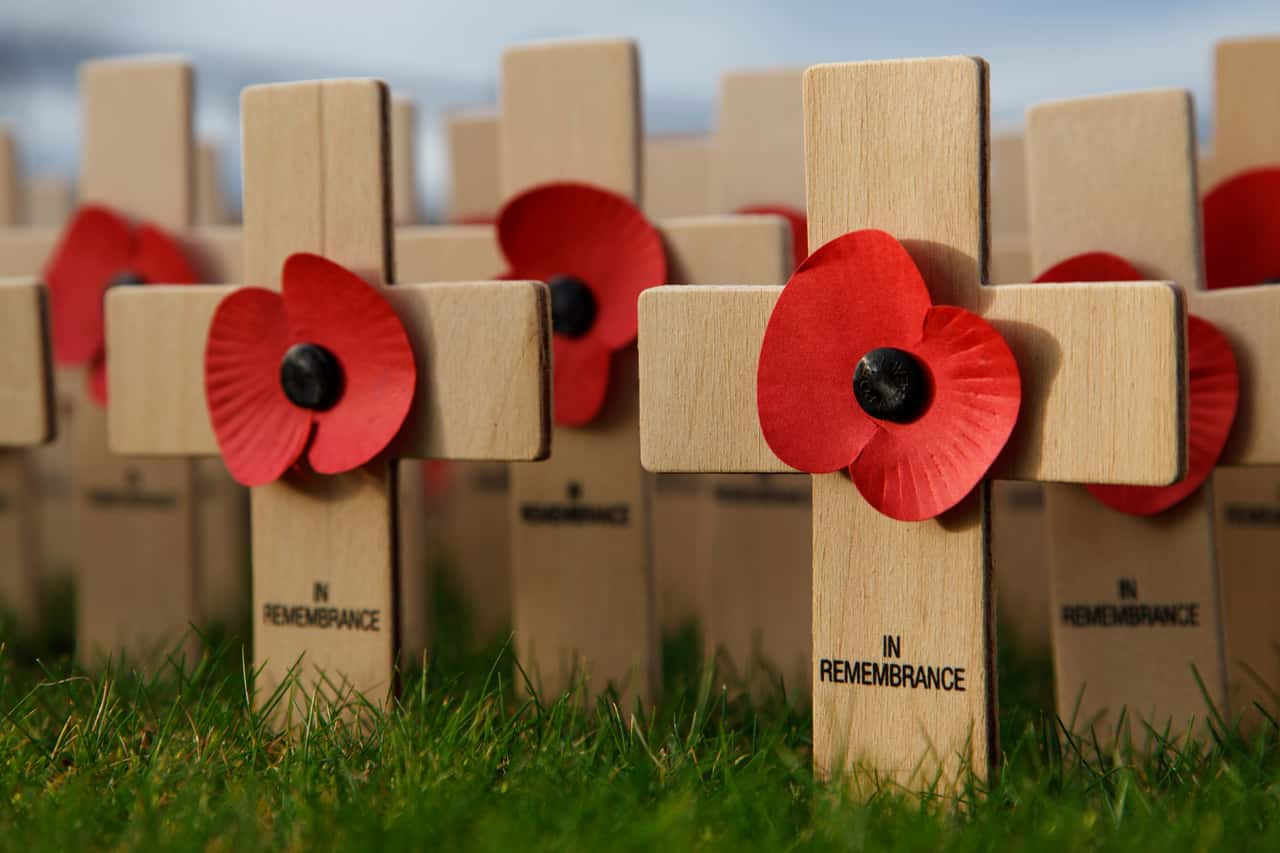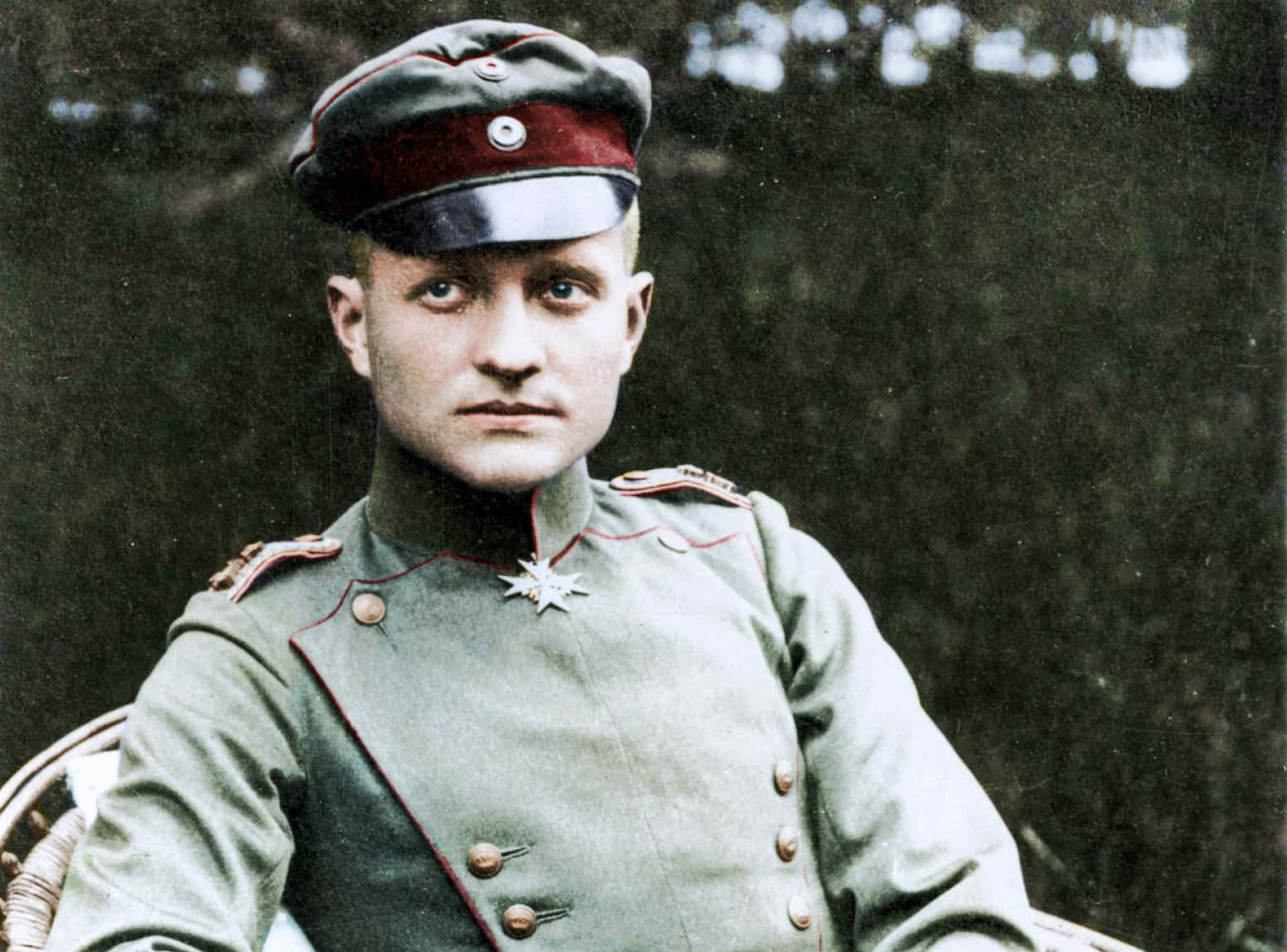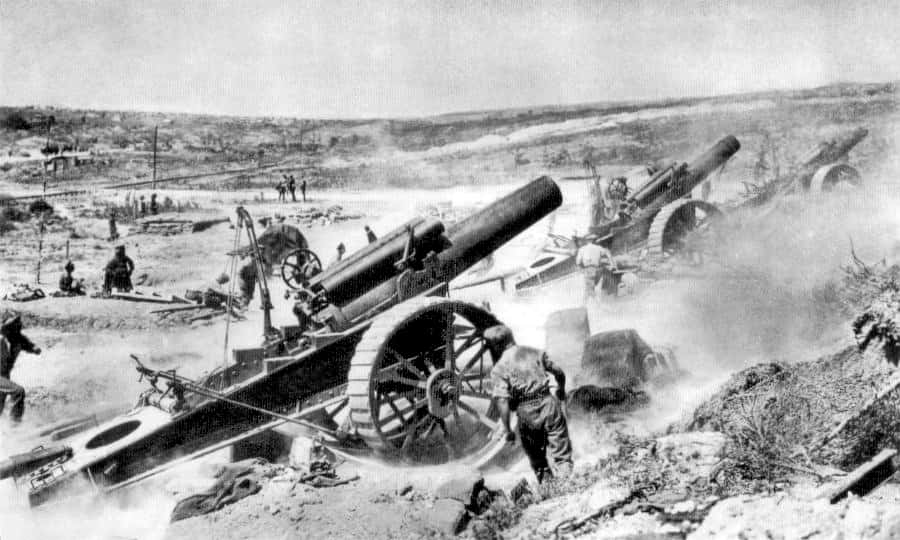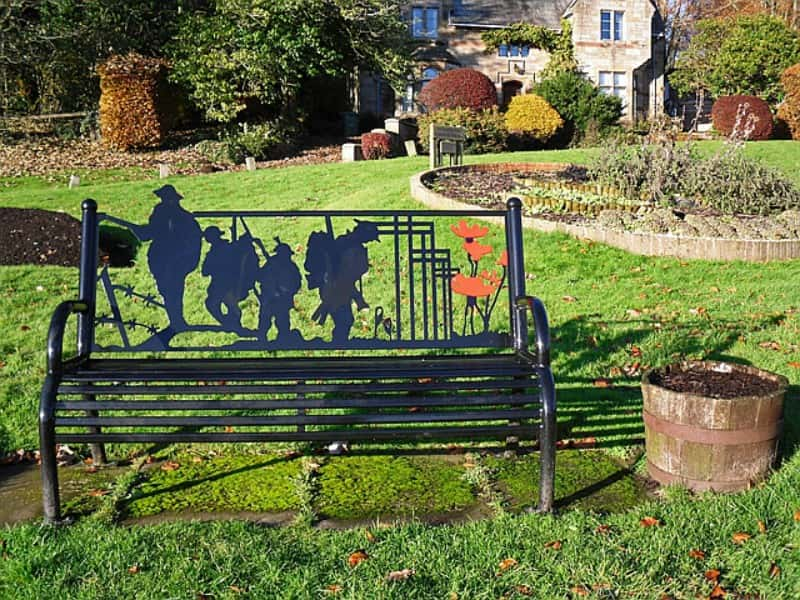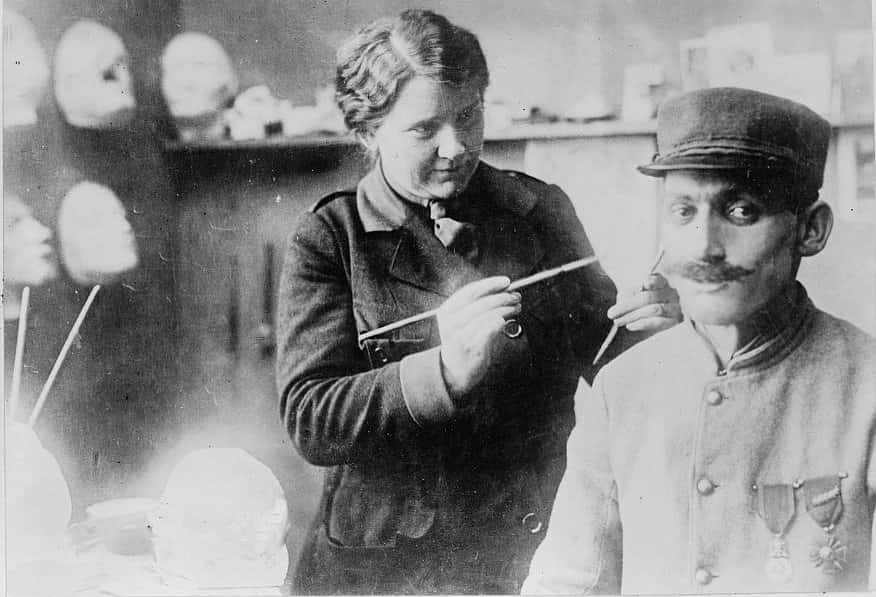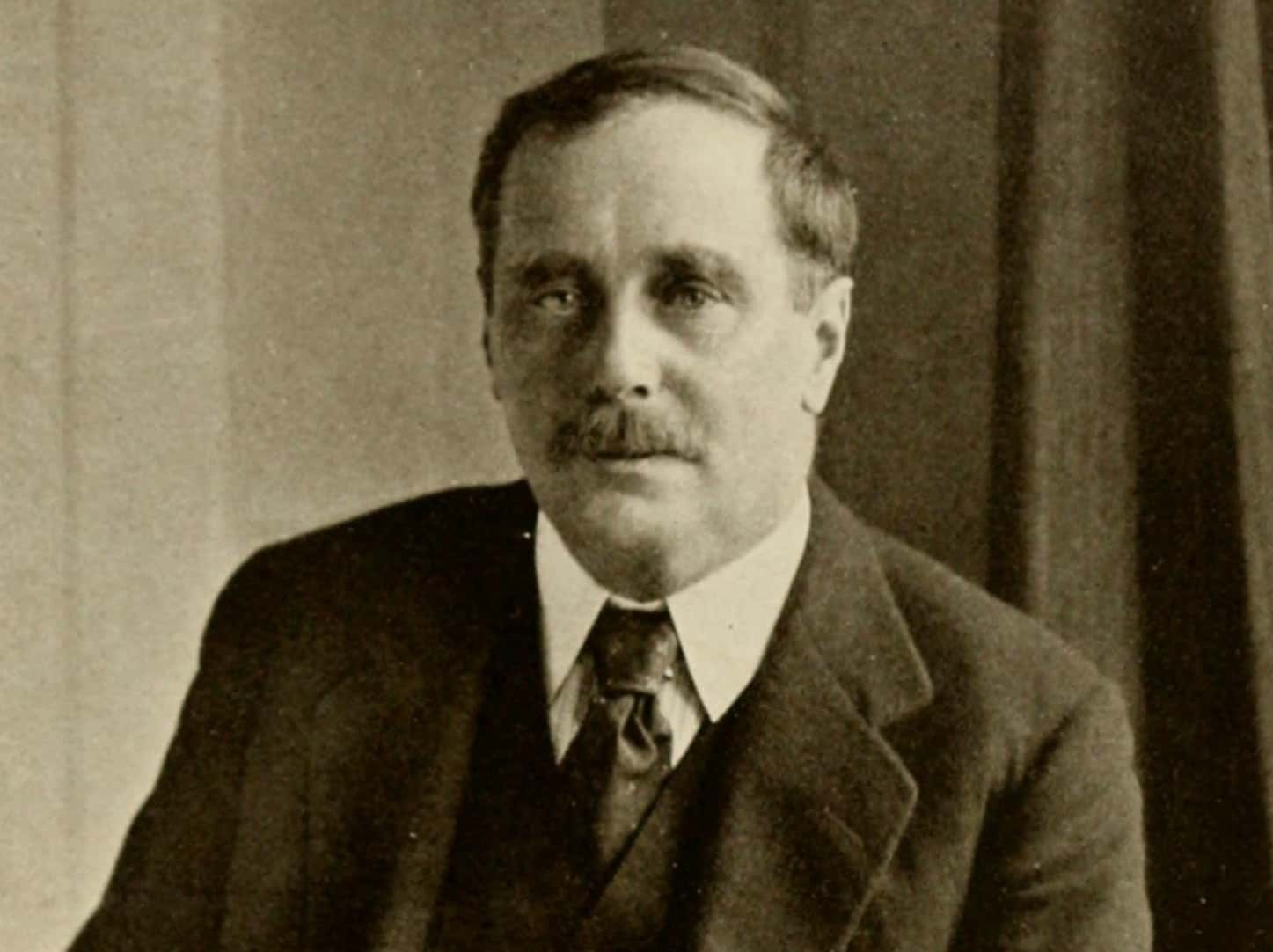“In Britain and Europe, no event is less forgotten than World War I, or 'The Great War,' as it was called until 1939” -Michael Korda
World War 1 took place between 1914 and 1918 and is known as the “First World War”, “The Great War”, and “The War to End All Wars”. It was a global conflict originating in Europe and involved more than 70 million military personnel. Over 16 million deaths resulted from the war, including 9 million soldiers and 7 million civilians. It was one of the largest and deadliest wars in history and caused major political change in the countries that were involved, and some of the unresolved issues from the war contributed to WWII just two decades later. Here are 42 harrowing facts about the Great War.
World War I Facts
42. Jet Flames
Modern flamethrowers were first used in WWI by the German forces in an attack against British at Hooge in Flanders. The earliest flame throwers dated back to the 5th century, but the Germans refined the designs that were used in the war.
41. Trigger for War
The assassination of Archduke Ferdinand was not the sole cause for WWI, but it was considered to be the trigger that started it. The assassination was orchestrated by a group of Serbian nationalists who lived in the Balkan territories belonging to Austria-Hungary, and who felt that they should become part of the Serbian nation. Austria Hungary blamed the Serbian government, and once they were assured of Germany’s support, declared war on Serbia. Within a week, multiple European countries had entered the conflict, officially launching WWI.
40. Alliances
One of the reasons that so many European countries entered into WWI were the mutual defense agreements that had been made between various countries. The treaties stated that if one of the countries in the treaty were attacked, the other countries were obligated to defend them. The war began with Austria-Hungary attacking Serbia, and a chain reaction began. Russia entered to defend Serbia. Germany entered to defend Austria-Hungary. France was allied with Russia, Britain was allied with France and Belgium, and Japan was allied with Britain. Eventually, the United States entered the war and fought with the allied countries.
39. Wartime Poem
In Flanders Field was written in 1915 by a Canadian officer and surgeon named John McCrae, who wrote it in honor of his friend who died during the Second Battle of Ypres. The battle was the first time the Canadian Expeditionary Force had seen any action in the war, and McCrae told his mother in a letter that his impression of war was “of a nightmare.” The poem also helped make the red poppy a symbol of remembrance.
38. German Atrocities
In August 1914, the German army orchestrated a mass execution of Belgian civilians in Liege. The inhabitants were rounded up from the nearby villages and shot. Any who survived the shooting were killed with bayonets. There were a few reasons for the massacres. First, they were retaliation for setbacks suffered by the German army during their invasion of Belgium. Second, much of the German army believed that the locals were actually civilian snipers who were attacking them. Third, the German troops were executing a war policy known as Schrecklichkeit, meaning frightfulness, which was intended to frighten the civilians in the occupied areas to prevent rebellion.
37. Sonic Boom
During the war, while soldiers were fighting in the trenches, a group of miners were secretly digging tunnels 100 feet below the ground in order to place mines below enemy trenches. At Messines Ridge in Belgium, over 900,000lbs of explosives were detonated at the same time in across 19 tunnels, destroying a large portion of the German front line. The explosion was so powerful it was heard by the British Prime Minister over 140 miles away.
36. Canadian Contribution
The Battle of Vimy Ridge took place over four days beginning on April 9, 1917. For the first time, all four divisions of the Canadian Corps fought together as one group, and it was a key moment for Canada as a nation and in the war.
35. Gendered Tanks
The tanks used in WWI were delineated as male and female. The male tanks had cannons, and the female tanks had heavy machine guns. One of the first tanks used in WWI was named “Little Willie,” built in 1915.
34. A Productive Industry
War-related manufacturing was a highly productive industry. Each of the involved nations organized workers to supply enough equipment to the troops and led to government intervention in Britain. The industry was ultimately able to produce 4 million rifles and over 170 million rounds of shells, as well as planes, rifles, tanks and artillery pieces by the end of the war.

Sign up to our newsletter.
History’s most fascinating stories and darkest secrets, delivered to your inbox daily. Making distraction rewarding since 2017.
33. Remembering
World War I is memorialized each year in a variety of rituals around the world on the day of the war’s end. Remembrance Day is observed in all Commonwealth nations (including Canada, the United Kingdom, Australia, and New Zealand) on the 11th day of the 11th month at the 11th hour and signifies the formal end of the war. The most common tradition includes a minute or two of silence, as well as the bugling of the military call “The Last Post.” Other countries including the United States have their own memorial traditions, separate from the British Commonwealth countries.
32. Facing Danger
At the start of WWI, journalists were banned from the frontline because the Government insisted on controlling what information came out about the war. In their eyes, reporting on the war was equivalent to helping the enemy, and the journalists who reported the truth about the realities of war were risking their lives. If caught, they faced execution.
31. Spanbroekmolen Crater
Before the war, Spanbroekmolen was a windmill located in the Belgian province of West Flanders. It sat on the site for over 300 years until it was destroyed by the Germans in November of 1914. Throughout the war, it became a site of intense fighting between the Germans and the British, and in June 1917, was the site of the Battle of Messines. Leading up to the battle, the British had been digging mines beneath German lines on Menses Ridge. On June 7, 1917, they exploded the mines, leaving a crater approximately 250 feet wide and 40 feet deep. In addition to destroying the German forces, it also killed several British soldiers. Today, it is recognized as a memorial of the battle, and is known as the Pool of Peace.
30. The Red Baron
German Pilot Manfred von Richthofen was the most successful German fighter pilot during the war. He quickly rose through the ranks and was leader of the Jasta 11 before becoming leader of a larger fighting wing known as “The Flying Circus”. He shot down 80 planes, which was more than any other pilot. He was nicknamed the Red Baron because of the bright red color of his aircraft, and his noble background. He was shot down in 1918 while flying over Morlancourt Ridge and was thought of as a hero in Germany.
29. New Ideas
The War led to several innovations in manufacturing, chemistry, communications, and military tactics. WWI was the first time that aircraft were used in war, and it meant that soldiers and civilians could be attacked from above. Advances in medicine also meant that for the first time, British deaths in battle outnumbered death by disease.
28. Nursing Sisters
During WWI, more than 3,000 nurses served in the Canadian Army Medical Corps, 2,504 of which were overseas. They were nicknamed the Bluebirds because they wore blue uniforms with white veils. While they did not work directly on the frontlines, they would meet the trucks of wounded soldiers and assist with surgery and post-operative care. Of those who served, 53 died from disease or enemy fire. On June 27, 1918, a German U-Boat sank the Canadian Hospital Ship the Llandovery Castle, killing all 14 nurses aboard. Often referred to as “Angels of Mercy” or “Sisters of Mercy”, they are memorialized in the Canadian Parliament’s Hall of Honour.
27. Unknown Warrior
As part of the British Remembrance Day ceremonies in 1920, David Railton, a chaplain who had served on the Western Front proposed that the body of an unknown soldier, sailor or airman buried in an unmarked grave be returned to England to be buried in Westminster Abbey. The unknown soldier would become a symbol of all who had died in the war, and whose death or burial site was unidentified. On November 11, 1920, the body was taken in procession to the Abbey and buried. The site is now one of the most visited war tombs in the world.
26. Treaty of Versailles
Although the fighting was technically over in 1918, the war didn’t officially end until the signing of the Treaty of Versailles on June 28, 1919. The treaty was negotiated by the Allied powers, and reassigned German borders and made them liable for reparations. Germany initially agreed to the terms, but the plans were cancelled in 1932, and Hitler’s rise to power negated the rest of the terms of the treaty.
25. Lethal Gas
The Second Battle of Ypres began on April 22, 1915, when German soldiers attacked the allied soldiers along the Western Front by releasing 150 tons of lethal chlorine gas at Ypres in Belgium. It was the first introduction of poison gas as a weapon in the war, and immediately after the battle, France and Britain began developing their own chemical weapons and gas masks.
24. You Sunk Our Passenger Ship!
Less than one year after the start of WWI, a German U-Boat sank the British ocean liner the RMS Lusitania, killing 1,100 of the 1,900 passengers and crew on board. The torpedoing of the ship was a key factor in turning the public against Germany.
23. Entering the Fray
When WWI broke out in 1914, then US President Woodrow Wilson promised to maintain a neutral position in the war. However, Britain was one of their closest trading partners, and when American ships traveling to Britain were damaged or destroyed by German mines, relations with Germany became tense. In 1917, Germany resumed unrestricted warfare in war-zone waters, resulting in the US breaking diplomatic ties. Just a few hours later, Germany sunk the American liner Housatonic, and the process of preparing for war began. In March of 1917, Germany sunk four more US merchant ships, and four days later, the US officially entered the war.
22. Trench Warfare
Trench warfare was a style of fighting during WWI that involved opposing armed forces attacking, counterattacking, and defending from trenches dug into the ground. The trenches would make it virtually impossible for forces to advance and could extend for several miles. By the end of 1914, both sides had trenches running from the North Sea and through Belgium and France. After the war, both sides swore never to use that tactic again.
21. Chinese Labour Corps
As the war progressed, manpower became an issue. The use of trench warfare necessitated an increased use of ammunition and supplies, which left factories, depots, and workshops short of labor. Their most important task was digging trenches, and between Britain and France, 140,000 workers were recruited from China. They became known as the Chinese Labour Corps.
20. No Man’s Land
Between the trenches was an open space that became known as No Man’s Land. It was a barrier that no soldier would cross for fear of being attacked by the enemy. Due to the wet climate in France and Belgium, the zone became quite muddy, and soldiers could disappear into the mud and never come out.
19. A Christmas Truce
In a rare goodwill gesture between the Allied and enemy forces, a temporary truce from fighting was called on Christmas Day in 1914. On that day, the war was put aside, and troops celebrated the holidays in the trenches. Beginning on Christmas Eve, the German and British soldiers came out of the trenches, sang Christmas Carols to each other, and wished each other Merry Christmas in their native languages. Some even shook hands with enemy soldiers. The truce was never repeated for the rest of the war.
18. Staggering Losses
The casualties suffered at the Battle of Somme were some of the worst ever experienced in war. The battle lasted for five months and approximately 1.2 million men were killed or wounded. On the first day of battle, 57,000 British men were killed or wounded as they tried to reach German lines, and 700 soldiers of the First Newfoundland Regiment were killed in the first half-hour. At the end of the day, only 68 of the 801 members of the regiment were able to answer roll call.
17. Russia Out.
On March 3, 1918, the new Bolshevik government of Russia signed the Treaty of Brest-Litovsk with Germany, Austria-Hungary, Bulgaria and the Ottoman Empire to end their participation in WWI. By that time, the Russian army was depleted, the Germans had advanced into Russian occupied Poland and Lithuania, and the new regime wanted to get out of the war. The terms of the treaty forced Russia to give up nearly half of its European territory (including Poland), and Ukraine, Finland, Estonia, and parts of Latvia became independent states under German protection. Russia also gave up a large portion of agricultural land, over 80% of its coal mines, and half of its other industries. As part of the follow-up agreement in August of 1918, the country also had to agree to pay six billion marks in restitution.
16. Salad Bowls
Before 1915, British soldiers going to war only had a cloth cap for protection. In 1915, Brodie helmets were introduced, which while uncomfortable, were far better than the cloth caps. John Leopold Brodie designed and patented the helmet and was modified by Sir Robert Hadfield to be made of a stronger steel than the original concept. The helmet was nicknamed the Tommy helmet or Tin Hat in Britain, the Doughboy in the U.S., and was called the Salad Bowl by the German Army.
15. Blue Benches
The injuries caused by machine gun fire in WWI were horrific. The soldiers would often lose entire parts of their face, often resulting in almost complete isolation. In England, benches near the Veteran’s hospital were painted blue, signifying that it would be extremely upsetting to see any man who was sitting there.
14. The Man in the Copper Mask
Repairing the soldier’s injured faces was virtually impossible in the days before plastic surgery and transplants, so the solution most often used was to create masks. Some of the best masks were made by sculptor Anna Coleman Ladd who would take plaster casts of a soldier’s face and attempt to re-create the missing part of the face. She would make the masks out of copper and paint it to match the skin while it was being worn. The mask would be tied to the head with a string or hung from eyeglasses. Eventually, Ladd was able to create the masks from images or photos. In 1925, she was made a Chevalier (knight) of the Legion of Honor for her work.
13. Conscientious Objectors
As with any war, there were a number of dissenters who refused to cooperate with the military and fight in WWI. Of the men who were drafted in England, approximately 16,000 became conscientious objectors to the war. In Britain, many of these men were either sent to prison or assigned to civilian jobs. Some were handed white feathers as an implication of cowardice, and as an attempt to shame them into fighting. In many other European countries, the conscientious objectors were imprisoned or executed. In the US, those who refused to carry out any form of service were sentenced to hard labor in prisons like Alcatraz and Ft. Leavenworth.
12. War Pigeons
During WWI, pigeons were found to be a reliable way of sending messages, and as a result, came to play a crucial role in the war. They had an amazing homing ability, and flew at such a high speed, that shooting them down was almost impossible. Over 100,000 pigeons were used during the war, with a success rate of over 95% in delivering their messages.
11. Cher Ami
One legendary story about pigeons from the war is that of a pigeon nicknamed Cher Ami. As the story goes, in October of 1918, American soldiers found themselves trapped by the Germans, and cut off from other Allied forces with no working radios. Their only chance of being rescued was to send out a message by pigeon, alerting the Allies to their location. The pigeon Cher Ami reportedly flew 25 miles from behind German lines to American headquarters in just 25 minutes. German forces apparently shot the pigeon in the chest, but it continued to fly home and successfully delivered the “Lost Battalion’s” coordinates to the Americans. A rescue was launched, and 194 men were saved. Cher Ami was awarded the Croix de Guerre with Palm for its incredible feat.
10. Food Price Fixing
Prior to WWI, Edwardian society was one of lavishness and luxury for the wealthy classes, but during the early months of the war that trend reversed as shortages came into play. Food prices rose drastically as stockpiling occurred and the newly formed Cabinet Committee on Food Supplies was forced to fix maximum prices for food. At the same time as the price fixing was put in place, the luxury food demand experienced a major drop due to a lack of entertaining.
9. As Dark as the Middle Ages
Fuel also was in short supply during the war, forcing Britons to dim the street lamps and put up blinds which were to be kept drawn at night. These new laws led one lady to quip that by the end of the war, Britain was “almost as dark as the Middle Ages.” By 1915, coal was also in short supply, and newspapers began printing advice on how to save fuel while cooking or cook without it entirely.
8. War to End All Wars
H.G. Wells was the first to use the term “The War to End All Wars” to describe WWI. With casualties of up to 15 million people and the absolute destruction it caused, Wells, along with many others, hoped that it would teach the world that war was not a solution for settling political conflict. In the end, this hope pcroved idealistic, and less than three decades later, the world entered into another global conflict.
7. Zimmerman Telegram
In January 1917, a telegram was intercepted by British forces from German Foreign Minister Arthur Zimmerman trying to pull Mexico into the war by offering them bordering US territories. This message, along with the sinking of US ships, helped draw the Americans into the war.
6. Big Bertha
Big Bertha was the name of a 48-ton howitzer (giant gun) used by the Germans during WWI and was named after the designer’s wife Bertha. It could fire a 2,050lb shell approximately 9.3 miles and took a crew of 200 men and six hours to put one together. Altogether Germany had 13 of these “wonder weapons”.
5. Humanity Is Mad!
The 21-year-old French Lieutenant Alfred Joubert’s diary became an important eyewitness account of the war. In his diary, he wrote “Humanity is mad! It must be mad to do what it is doing. What a massacre. What scenes of horror and carnage! I cannot find words to translate my impressions. Hell cannot be so terrible. Men are mad!” Joubert was killed by a German artillery shell just one day after writing that entry.
4. Finding a Way
At the beginning of the war, some Americans were angry with the United States’ decision to remain neutral and not enter the war. Anxious to contribute, many of them joined the French Foreign Legion or the British Canadian army. The Lafayette Escadrille was part of the French Air Force but was formed by a group of American pilots. They became one of the best fighting units on the Western Front.
3. Lawrence of Arabia
Thomas Edward Lawrence was a British diplomat, archeologist, military officer and writer who gained legendary status during WWI. He was known for his participation in the Arab Revolt against the Ottoman Empire during WWI and became known as Lawrence of Arabia. In 1962, a film of the same name detailed his activities during the war.
2. A Criminal Offense
As shortages grew, rations also became stricter. Chocolate and candy sales halted entirely, horses, cows, and pigeons were rationed, and throwing rice at weddings became a criminal offense. The government advised people to “eat slowly” and “keep warm” so that they would need less food, but no suggestions on how to keep warm with limited fuel and no fat in their diet was offered.
1. Canary Girls
Both the staining color of their product and its toxic side effect of jaundice became a problem for the UK women who made TNT during WWI. These women were called canary girls, because being exposed to TNT was toxic, and it turned their skin the same orange-yellow color as the canary. Munitionettes was another nickname for the women. Despite the endearing nicknames, almost one in four canary girls died from the toxic effects of their work.
Sources: 1, 2, 3, 4, 5, 6, 7, 8, 9, 10, 11, 12, 13, 14, 15, 16, 17, 18, 19, 20, 21, 22, 23, 24, 25, 26, 27, 28, 29, 30, 31, 32, 33, 34, 35











